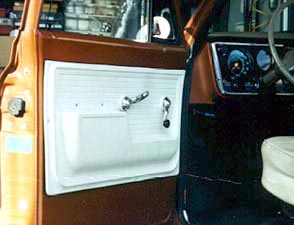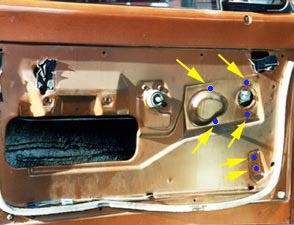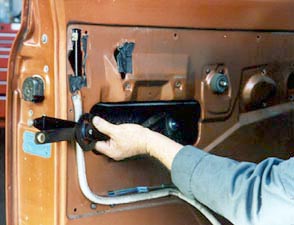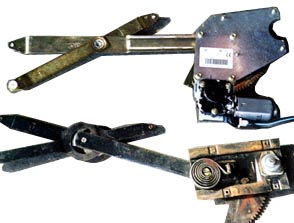 |
|
This shot shows a comparison
between the Classic Performance Products and
the original regulator. Notice how the Classic Performance
Products regulator is a scissors type, just like the factory
piece. |
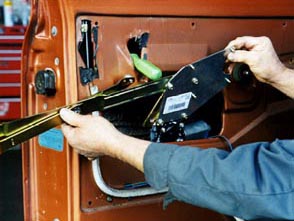 |
|
After attaching the motor wires,
slide the Classic Performance Products regulator
back into the door. Line up the slides with the tracks on the glass and
the door and slide them in. Be patient. This may take a little time and
finese to get all three lined up at the same time. It may also help to have
an assistant hold the window against the rear channel and move the glass
up and down slightly to aid in liningup the slides. When all 3 slides are
in their respective tracks, move the window either up or down until the
studs on the regulator match the holes in the door. |
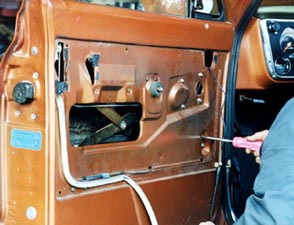 |
|
Attach the regulator using
the hardware supplied. The kit uses Metric hardware, so the old hardware
must not be reused. Use a 10mm wrench to tighten the mounting nuts. Apply
power and ground to the blue and black wires coming from the motor and roll
the window down. Reversing the wires will make the window travel in the
opposite direction. Run the window down into the door. Place the wing window
assembly back in the door and reattach the screws. |
 |
|
At this stage the power window
wiring must be run into the truck. Holes must be drilled in the doorjamb
and grommets installed in the holes to pass the wires through. Be sure to
avoid any sharp metal edges which might short the wires. After the wires
have been routed through the truck, connecting them to power and ground
is all that is left. |
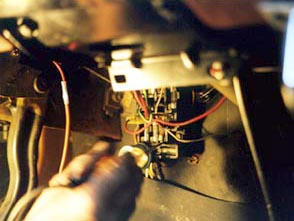 |
|
Tap into a heavy circuit that
is live only with the key on. We choose to tap into a power wire close to
the fusebox. After the wiring is done the switches need to be mounted in
the door panels. We used the illuminated switch kit in this vehicle so that
the bezels would cover up the bump where the crank handles were. The holes
are slightly enlarged using the new bezel as a pattern, and the panels are
screwed in from behind. When the car goes to the paint shop, the door panels
and the switch bezels will get painted. |
 |
|
After reassembling the door
panels, the system is ready to test. The Classic Performance
Products power window kit works perfectly. The window works
quietly and quickly, just like it should. |


